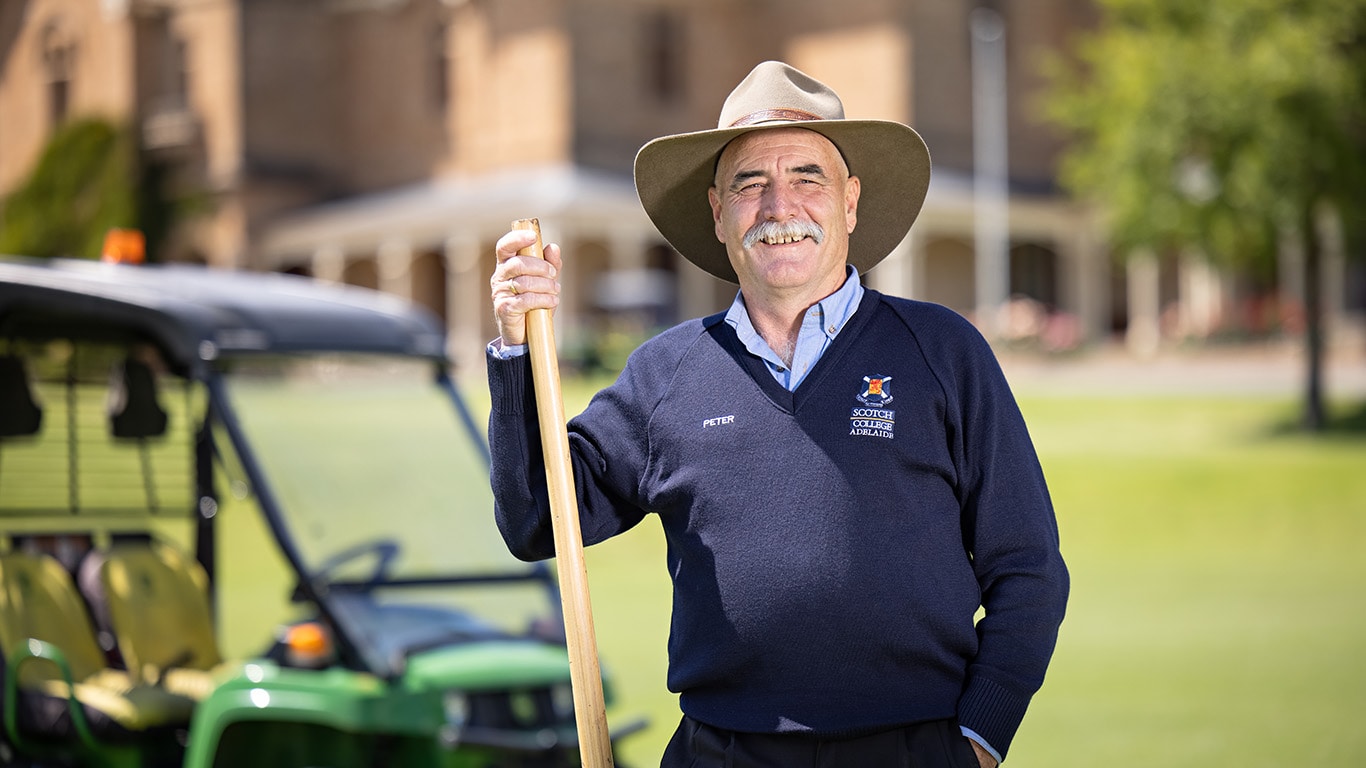Press Releases January 08, 2021
Grass guru shares simple trick to examine your lawn’s soil

Scotch College Adelaide Grounds and Horticulture Manager Peter Harfield says the best way to find out if a lawn is in good health is to look beneath the surface.
Crestmead, Queensland (8 January, 2021) – IS your lawn thriving or failing? Now is the perfect time to look below the surface to see exactly what's going on. A simple soil test can unlock all the answers to improve your lawn.
Summer is the peak grass growing season, so John Deere has partnered with industry leaders, like Scotch College Adelaide Grounds and Horticulture Manager, Peter Harfield, to share the secrets to creating a lush, healthy lawn.
His first tip is to get your hands dirty.
Over his four decades of greenkeeping, Peter may have honed the art of growing grass, but he still brings it back to basics with regular soil tests on the lawns he manages.
This test simply involves digging a small hole to examine root growth and soil structure. It's a tried and true trick with the power to transform grass for any lawn lover.
So, what is Peter looking for in his soil test?
Soil health: why it's important for a good lawn
Many people do not realise roots need room to breathe – their growth revolves around the aeration of the soil. All lawns need healthy, aerated soil to encourage roots to spread and flourish, which will create a great leaf on the surface.
Deeper healthy root systems make it easier for grasses to endure environmental stressors, such as hot and dry periods.
How can I check if my soil is healthy?
There is no substitute to digging a hole and having a look at the soil for yourself. Even professionals can forget to perform this basic task. No one has X-Ray vision, so if you don't look below the surface at your soil you are simply guessing.
How can a soil check be performed at home?
All you need is a little spade. Dig a small, square hole 100–150 mm deep. From there, you can closely examine the sample you have retrieved.
What should we be looking for in our sample?
Firstly, check to see how moist the soil is. If it looks and feels old and dry, you will know it needs watering, some aeration, and wetting agents to rehydrate the root zone area as soon as possible.
You can also check to see how deep the roots are growing, and if they are doing what we want them to do and are chasing water deep underground. If it's in good health, your sample will have visible, white coloured thriving roots throughout the square.
What does a healthy soil sample look like?
The ideal soil sample looks like a big piece of chocolate cake – a consistent, rich colour that's moist.
What does an unhealthy soil sample look like?
The worst kind of sample will look like a rainbow-layer cake. Layered soil has a slow water penetration rate and indicates the soil and air exchange is very slow in reaching into the root zone. When you see this, think of it like your grass is trying to run a marathon while holding its breath – it is not a good sign.
If we find out we do have a rainbow-layer cake, what should we do?
If replacing the soil with a complete makeover is not possible, the next best thing to do is
physically open up the soil with something like a garden fork. To be honest, not much beats a good old garden fork being driven into the ground as the prongs help to break through the layering effect, which in turn, will speed up the water infiltration into the soil and also allow the soil gasses to easily be exchanged with the atmosphere.
What other steps can be taken to improve your lawns and moisture in soil?
You can try mixing up some molasses with water and applying it to the grass. I recommend about 20 ml of molasses for one litre of water. Molasses is carbon-rich and an efficient method to improve soil and in turn plant health.
More information on keeping your lawn legendary is available here.
About Deere & Company:
Deere & Company (NYSE: DE) is a world leader in providing advanced products and services and is committed to the success of customers whose work is linked to the land - those who cultivate, harvest, transform, enrich and build upon the land to meet the world's dramatically increasing need for food, fuel, shelter and infrastructure. Since 1837, John Deere has delivered innovative products of superior quality built on a tradition of integrity. For more information, visit John Deere at its worldwide website at JohnDeere.com or in Australia at JohnDeere.com.au.
Media Contacts:
Stacey Wordsworth
0438 394 371
stacey.wordsworth@bluehillpr.com.au
Hannah Hardy
0421 196 004
hannah.hardy@bluehillpr.com.au




